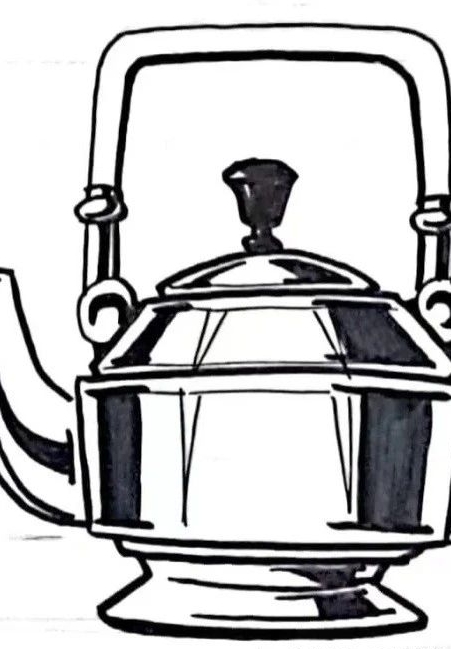

Views: 0 Author: Site Editor Publish Time: 2024-11-07 Origin: Site









Peter Behrens has long been known as the father of German industrial design, and the design of electric fans can be said to be a very classic case.

( Peter Behrens / Electric Fan)
The electric fan designed by Behrens in 1908 still retains its original style and structure, and is also a classic of industrial design. Behrens' design philosophy makes electric fans not only practical, but also modern. The electric fan is Peter Behrens' classic design work from a functionalist point of view. He discarded the Gothic decoration and focused on the form, structure and function of the product.



Simple and bright shape:
The overall design of the electric fan is simple and there is no superfluous decoration, which reflects the design concept of Behrens from the perspective of functionalism.

Consideration of industrial production process:
The design takes into account the industrial production process, so that the product not only meets the requirements of mass production, but also enriches the product style.

Combination of functionality and aesthetic ideals:
Behrens regards the simplicity and functionality of appearance as the aesthetic ideals of industrial products, and the design of electric fans is both practical and beautiful.

Material and structural innovation:
The electric fan is made of materials such as iron cast base, metal fan blades and wire cover, which is bold and innovative in structure, reflecting the characteristics of modernist architecture.

Experimentation with standardization and modularity:
Behrens' approach to standardized and modular production was further developed in the design of his electric kettle series.
![]()
Even more famous than the product itself is the designer himself,
Peter Behrens, a great figure in the history of design
( Designer / Peter Behrens)



Born in Hamburg, Behrens studied painting at the Academy of Fine Arts before switching to architecture. In 1907, Behrens began his career as an industrial designer when he was hired as an art consultant for AEG, a German general electrical company. He is the founder of German modern design, regarded as the father of German modern design, the first industrial designer in the modern sense, the first designer in the world, and has an important position in the history of world design.
In 1868, Born in Hamburg, Germany, he studied painting at the Academy of Fine Arts
In 1891 (age 23), he worked in Munich as a book illustrator and poster.
In 1893 (at the age of 25) Peter Behrens played a pivotal role in the Art Nouveau movement in Germany, becoming a member of the Munich "Young Style" organization;
In 1900 (at the age of 32) he had already considered turning his focus to architectural design;
In 1907 (at the age of 39) was the year of Behrens' success, which together with German designers he founded the German Industrial League. In this year, he was also hired by the German General Electric Company to design industrial products such as electric fans and electric kettles and corporate logos for Germany's largest electrical appliance company. It is also this opportunity that the world's earliest corporate image design system was born;
In 1909~1912 (41~44 years old), he designed the AEG Turbine Workshop.
Behrens is a famous German architect, the most famous designer of the "German Manufacturing Union", the pioneer of industrial product design, and as an important pioneer of the German modernist movement, he is known as the "first generation of modern industrial designers".
Behrens' place in the history of industrial design is irreplaceable. His design philosophy and practice not only promoted the development of industrial design, but also provided valuable inspiration for later designers. His contributions and influence were not limited to his time, but have also continued to this day, leaving a profound impact on the field of industrial design.

(Inspired by Behrens' design)
In 1910, he summed up his view of design in the magazine Art and Technology by saying that we have become accustomed to the modern form of certain structures, but I do not think that mathematical solutions will be visually satisfied. For Behrens, pure reason alone is not enough, and design is needed.

(Implications for us)
He emphasizes the practicality and functionality of design, advocates the combination of art and technology, pays attention to the reform and innovation of design education, and his works and ideas have had a profound impact on modern architecture and design. As design students, we should draw inspiration from Behrens' design, continue to explore and practice, and create design works that are more in line with the needs of the times. Being able to do rational analysis is the basis of design, the integration of technology and art is the driving force of design, and simple style is the trend of modern design. We should inherit and carry forward these concepts, and constantly promote the progress and development of design art.
Based on the design of Behrens in AEG
( Electric Clock )

The electric clock is also an electrical product designed by Behrens for AEG, which is also functional and modern in aesthetics.
( Electric kettle )



The design of the electric kettle fully considers the characteristics of the machine's batch and standardized production. The most distinctive feature is the connection at the handle of his handle. At the same time, the modular design concept is adopted, providing users with three different body bodies, two kinds of lids, two kinds of handles and two bases, which can be combined into 24 styles, which greatly improves the practicality of the material.
content is empty!